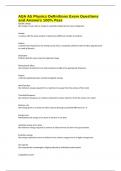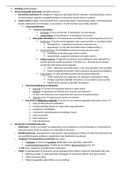Tentamen (uitwerkingen)
Lectures summary EPH1021 (Health, Health Determinants and the EU)
This is a summary of all the lectures that take place in the module EPH1021. It is very comprehensive and contains all the details required in order to pass the exam.
[Meer zien]













